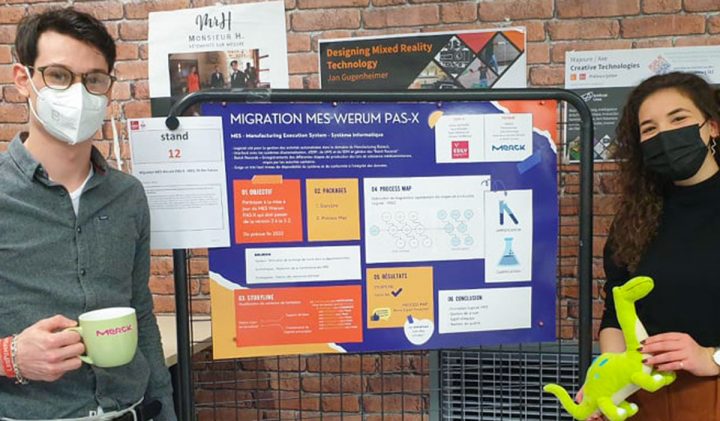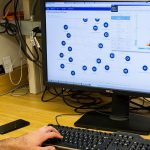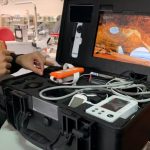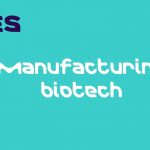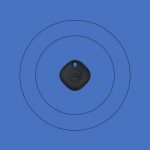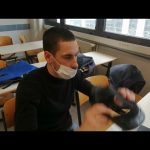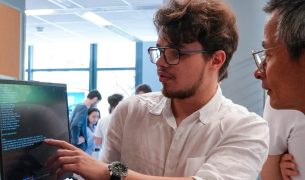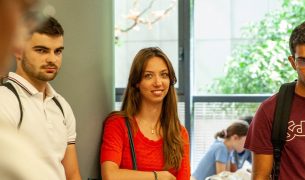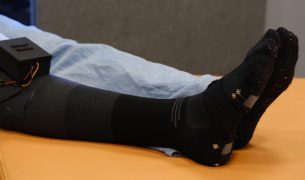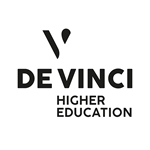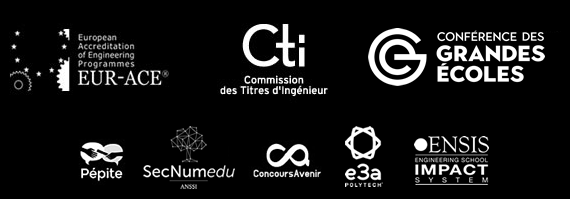Using digital technology to improve the diagnosis of eye diseases, improve the treatment of degenerative diseases such as Alzheimer’s, or increase the pharmaceutical industry’s performance. These challenges require training more engineers capable of evolving in a flourishing healthtech universe.
Between biotech, medtech and e-health, the need for skills in artificial intelligence, big data, and their applications in medicine and biotechnology is constantly growing. At ESILV, the industrial innovation projects developed by students as part of the engineering cycle focus on innovations in the health sector. Here is a closer look at three projects developed by students in the 4th and 5th years of their Master’s in Engineering degree at ESILV.
Vision measurements via augmented reality
Our project consists in measuring the vestibulo-ocular reflex. When our head is in motion, the vestibulo-ocular reflex allows us to stabilize our vision. Several pathologies can cause troublesome disorders: dizziness, and loss of coordination of the ocular muscles.
Specific head movements, which influence our gaze, allow us to diagnose pathologies of the vestibulo-ocular reflex. In partnership with Essilor, we have created an augmented reality scene on Microsoft’s augmented reality headset: the Hololens 2.
The chosen scene is a ball thrown in rings, and the rings will appear schematically, which will allow us to control the patient’s movements. The movements caused by this scene allow us to measure the position of the gaze during different exercises.
By comparing the patient’s gaze measurements with standard measurements, it will be possible to verify whether or not there is a disorder of the vestibulo-ocular reflex.
Tracking of Alzheimer’s patients
Alzheimer’s disease is a neurodegenerative disorder that affects the activities and daily life of the person suffering from it. This is why the main objective of our project is to bring additional help to the EHPAD (Establishment of accommodation for dependent older adults) in the follow-up and the localization of their patients in the company of the company Hear and Know. To achieve this goal, our project has two main parts:
- First, the research and selection of a connected device that would allow us to monitor the patient inside the EHPAD and locate the patient in case they would escape from the facility, something that Alzheimer’s patients can be widespread.
- Secondly, the development and implementation of a solution that would provide the EHPAD security staff with an additional and safe aid if the patient attempts to leave the EHPAD without being detected.
MES system migration in Pharma & Biotech
We carried out our PI2 project in partnership with MERCK,a multinational pharmaceutical company. It is a site specialized in biotechnology and biopharmacy located in Corsier-sur-Vevey in the canton of Vaud in Switzerland. The Corsier-sur-Vevey site is subject to strict quality, environmental, and safety rules like any pharmaceutical production site. This means that we work in a GMP environment, the international standard for pharmaceutical quality. The main products manufactured here are REBIF® for multiple sclerosis and Erbitux® for cancer.
The MES (Manufacturing Execution System) is the essential software for managing automated activities in the Manufacturing Biotech field. MES is a class of production-oriented software that organizes, monitors, and synchronizes the execution of processes involved in production. It interfaces with automation systems, ERP, LIMS (Laboratory Information Management System), and SDM (Software Delivery Management). In addition, it generates Batch Records, records of the different production steps of drug substance batches required by health authorities.
Therefore, MES requires a very high system availability and data integrity compliance. Thus, producing and releasing batches without MES is neither realistic nor feasible.
The current version of MES is more than ten years old, and the system shows signs of weakness with recurring failures. Therefore, MERCK decided to launch the MES project “Fit For Future,” which started at the end of 2019 to upgrade the software from version V2 to version 3.2.
The new MES system is a large-scale project that the company should complete by the last quarter of 2022.
Merck assigned us two tasks that we performed in pairs.
On the one hand, two team members were responsible for Storyline. It consists of modifying training materials by coding macros to enable users to conduct training. The second pair was in charge of creating Process Maps. This step consists of modeling diagrams representing the different steps of drug production protocols using Microsoft Visio software.
Learn more about the Health Engineering & Biotechnology major









